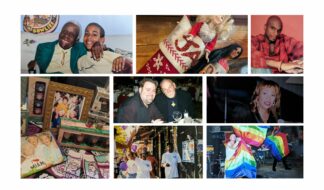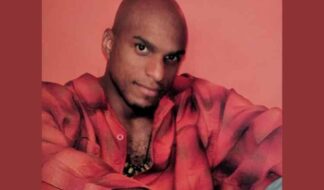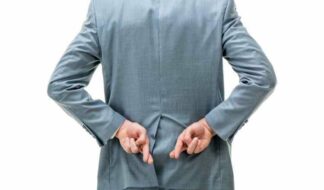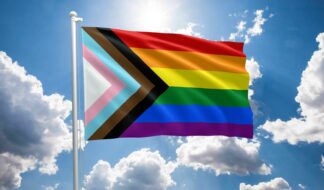By Gwendolyn Ann Smith
A few months back I found myself speaking at a Transgender Day of Remembrance event in Northern California. As the event was breaking up and folks started to head for their cars, a member of the local Sisters of Perpetual Indulgence came up to me. He – as he was male identified – was nearly my height, with a mustache and goatee, wearing the traditional makeup, habit, and wimple one might expect from a sister.
We had a lovely discussion, but one thing stuck with me and has been gestating deep in my brain now for nearly a year. We discussed awareness of transgender people within the larger LGBT community, specifically amongst gay males – and he discussed his own ignorance of transgender people. Not that they exist, mind, but more a "101" or who we are, why we are, and how our issues fit into the LGBT community as a whole.
Over the last year, too, we've seen some bitter, painful discussions about drag, about, "trans-exclusive radical feminists," and about the word "tranny." These same discussions continue, and frankly show little chance of slowing down.
I think a lot of this is born out of some of that same ignorance, though I also know a lot of it veers into deep-seated prejudices and hatred. Frankly, a lot of folks won't listen to any discussion on transgender people – let alone leave a conversation with some food for thought. This column won't change their minds in the slightest.
Yet I know there are some out there who may indeed wish to understand transgender people a little better, and may want to grasp just how transgender people fit into the larger community. They may even be willing to listen to a couple of the ways we differ. For those who wish to learn, I dedicate this particular column.
Transgender people – by and large – do not entirely feel comfortable in the gender they were assigned at birth, and may seek to transcend that gender in a number of ways. Some may opt to present in a way more closely associated with a gender other than that birth gender, some may opt to carve their own gender identity outside of the expected binary, and others still might choose to live their life without a "typical" gender identity. Any of these people might identify as transgender – which serves as an umbrella term – while others may opt for other terms they feel better fits their gender identity or expression. For some, that term might change over time, as their feelings grow.
A number of transgender people might simply adopt the clothing of another gender. Some might even adopt a name that is "traditionally" of a gender different from that assigned at their birth. Some may take hormones to masculine or feminize or masculinize their appearance. Some may opt for various forms of surgery to enlarge or reduce bust lines, to change their facial appearance, or to alter their genitals to match their gender identity. Not all feel such a need.
For most, changes to their gender identity are hard won. Many lose their families and friends over this. For some, marriages are dissolved. We risk our jobs, our livelihoods, and even the most basics of necessities over our gender identity.
Some who are transgender may identify as lesbians, or gay men, or bisexuals, or even straight. Who we're attracted to does not necessarily have a lot to do with our gender identity. That said, we can be affected by homo- and biphobia, even if we happen to be straight-identified. This is one of those places where we all intersect.
I identify as bisexual. When I am with my spouse, we might be read as two lesbians. Or some who opt to ignore my transition might read me as a gay male. My spouse might also be read as a male from time to time as well. Any of these could lead to homophobia being directed at either of us.
Indeed, when I am seen as transgender, it is far more likely that I will be called an anti-gay epithet than that I will be catcalled with some trans specific term.
The same holds true for many of my friends who are no transgender identified, but may be gay or lesbian. While they too might be called some anti-gay term, the reason for such may not be so much because they are with a same-sex partner, but because their gender identity is not seen as being rigidly make or female.
Look at the stereotypes that gay and lesbian people have faced over the decades. Gay males as limp-wristed hairdressers and speak with lisps and wear flamboyant, feminine attire, or "mannish" lesbians who sport crew cuts and wear denim and jeans while riding their motorcycles. These have very little to do with who one opts to sleep with, but have everything to do with expected gender norms.
This is one of the big places we cross over: we all have a stake in the fight for gender rights, and we all seek to gain.
As I mentioned before, there are places where we are divided. While many transgender people come up via the drag community, there are also huge divisions right now between some who perform in drag and others who are trans identified. There are some in the lesbian community who have decided that breaking down gender norms for themselves means also reinforcing them for transgender people.
Make no mistake, though: now is not the time to let ignorance reign, not while so many others would seek to keep us all down. We can, and we should stand in kinship.









